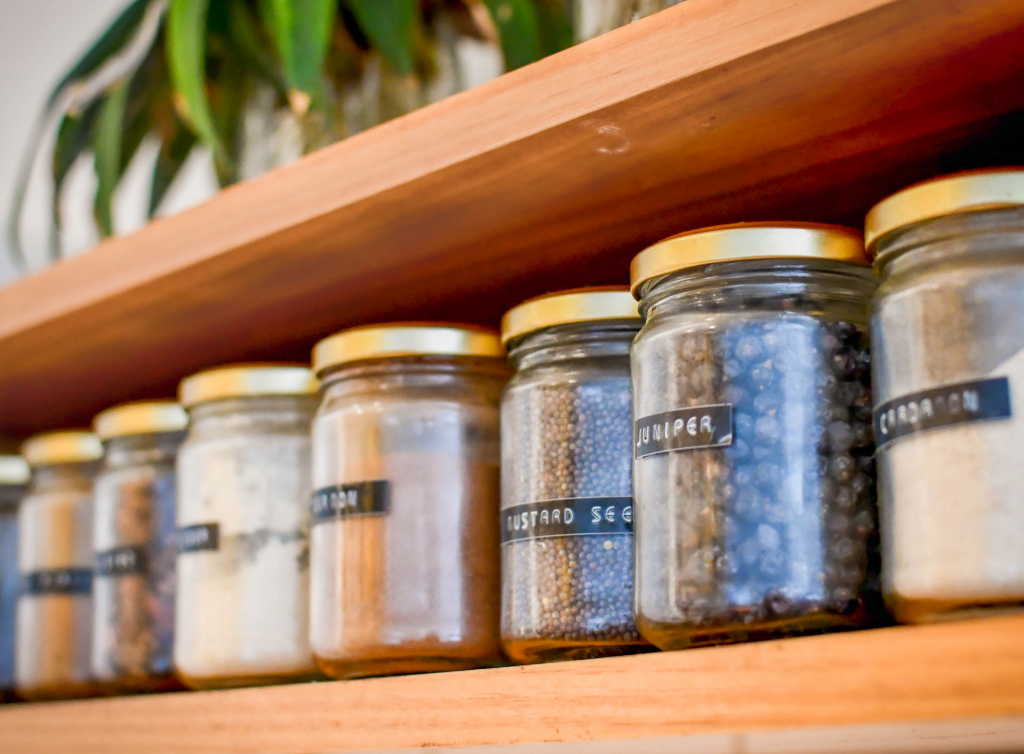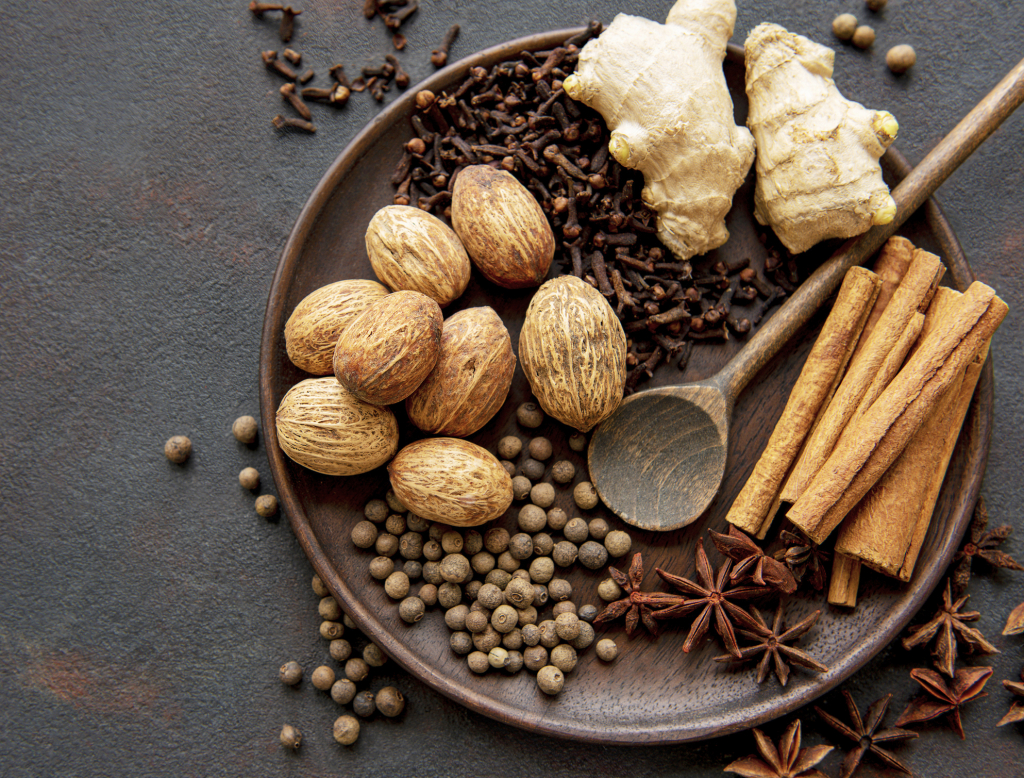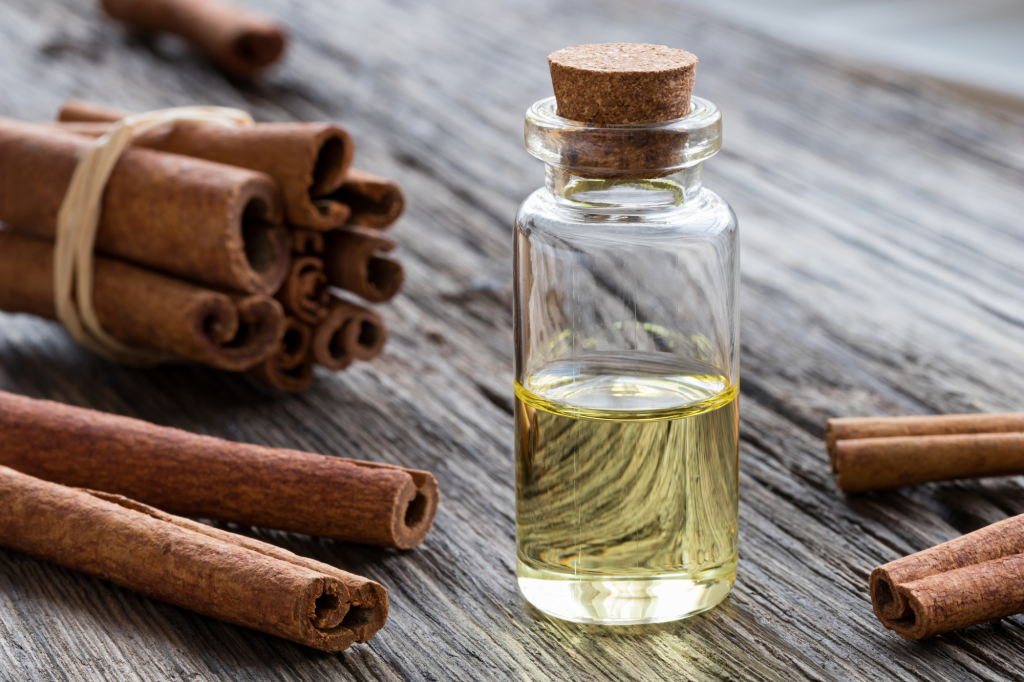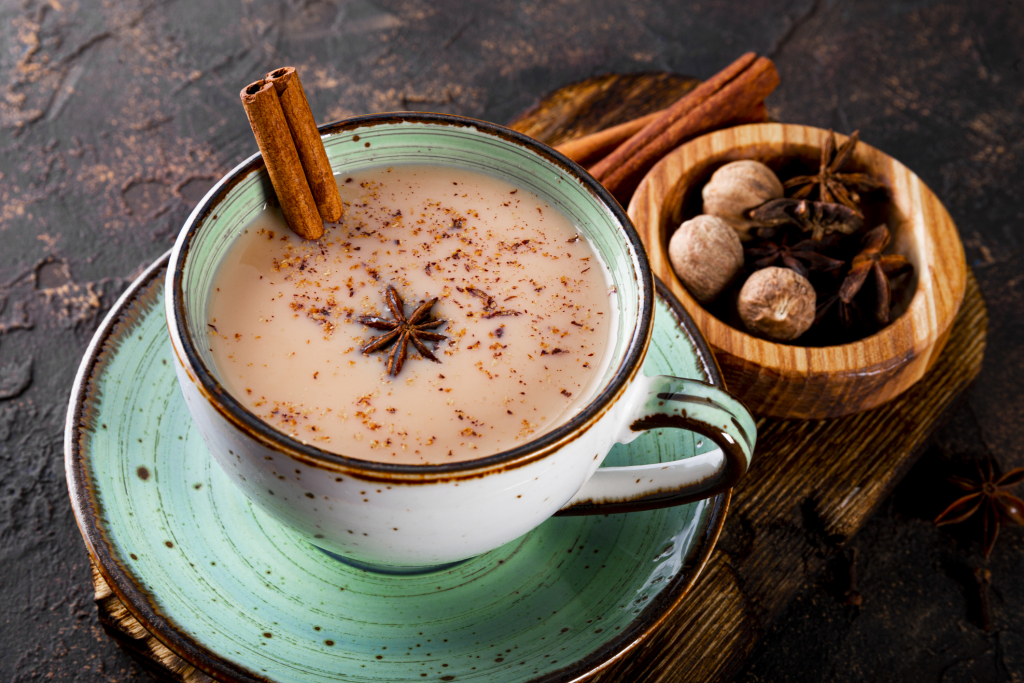Bring Warmth To Your Holiday Season With Aromatic Kitchen Spices
Fall and winter are the time to get cozy, nourish yourself with warmth, and support your body through the changing seasons.
Warming spices are your best friends this time of year and you most likely already have some in your kitchen that can be utilized. Lots of common kitchen spices have been traditionally used around the world for healing, preventative medicine, and as digestive aids.
Aromatic spices can help kindle your digestive fire and can ensure that your body is able to flow seamlessly with the seasons, helping defend against the sniffles, colds and coughs. It’s exciting to know that we can play an active role in our wellbeing, simply by reimagining our relationship with everyday herbs.
There are a variety of ways that your kitchen spices can be utilized, whether it be including them in your diet, burning them as incense, using them in rituals, or making tasty seasonal drinks like herbal Chai. There’s a lot of enjoyment and love to be discovered within your spice cabinet. Let’s explore the possibilities!

Tradition Within the Spice Cabinet
Aromatic spices are typically pungent in taste, heating to the body, and often act on the digestive system. They can support the body by way of stimulating specific organs, tissues, or systems. The degree of heat will vary from plant to plant, and each spice will affect the body differently.
Some of the most treasured warming aromatic spices include Cinnamon, Cardamon, Cumin, Ginger, Clove, Star Anise, and Nutmeg. If you are unfamiliar with any of these spices, it's time to deepen your herbal knowledge. Although, if you’ve ever enjoyed a warm cup of chai tea, then you have certainly experienced at least a few of these spices before.
Let’s take a closer look at some of the aromatic herbs mentioned.
Ginger
This diverse herb is great for using in tea and cooking. Add fresh or dried Ginger to your soups, stews or sauces to include a nice touch of heat. Our bellies need to maintain warmth throughout the colder months in order to properly digest the heavier foods that tend to be consumed at this time. Warming herbs keep things moving throughout the body, physically and energetically.
Ginger has traditionally been used to help with nausea, cramping, as well as to aid with colds and flus [3]. In Ayurveda, Ginger is said to work on all tissues of the body, with a particular affinity for the digestive and respiratory systems [1].
A great way to use Ginger externally is to add a little bit of powder into a bath. Before leaving the bath, be sure to rinse off thoroughly and quickly – it can be very warm on the skin! The Ginger will give your body some extra heat for a lengthy time period following your bath.
Cinnamon
Cinnamon is a classic example of a warming aromatic spice. We’ve all grown up with this familiar spice in our kitchen, but its benefits go far deeper than its wonderful taste. This spice has been used by many cultures for centuries for medicinal and aromatic purposes.
Cinnamon was used in ancient Egypt in perfumes, ceremonies and embalming rituals [2]. Additionally, many cultures have traditionally used Cinnamon as an ingredient in beverages, topical medicinal oil preparations and as an incense.
Cinnamon’s sweet, warm, tangy, and enlivening aroma can bring a sense of clarity to the mind and expansiveness to the heart. Its warming qualities increase and strengthen blood circulation. Traditionally, Cinnamon has also been used to relieve mild aches and muscle pains [1]. Like Ginger, it can be considered as a bit of a “universal medicine,” as it has been used often for colds and congestion.
Cinnamon has an affinity for the circulatory, digestive, respiratory and urinary systems. It is also commonly added into herbal tea blends to help relieve menstrual cramping. [1]
Cardamom
Cardamom seeds have both a sweet and pungent aroma and taste. It is commonly used as a digestive stimulant. It has a special affinity for supporting the spleen, but can also be helpful in clearing excess mucus from the lungs and stomach [1].
Cardamom has historically been used in cooking, as well as herbal teas and warm milk drinks. A sprinkle of ground Cardamom can also be added to your morning cup of coffee to help mitigate some effects of caffeine [1]. Cardamom is a common ingredient in many Oriental incense formulas for creating energetic movement and uplift.
Unlock Your Free Issue Of...
🌿 The Aromatic Medicine Garden Membership 🌿
Are you ready for a deeper, holistic dive into the world of aromatic plants? See what our membership is all about with your free sneak peek issue, including an hour-long plant talk and a 21-page plant profile pdf full of recipes and insights.

Clove
The part most often used from Clove is its dried flowers. It is pungent, stimulating to the mind and body, with a special affinity for the lungs and stomach [1]. It is often added to cooking or warming drinks such as herbal chai.
In Ayurveda, Clove is considered to act upon the body’s plasma, muscle, nerve, and reproductive tissues. It’s indications are similar to that of Cinnamon, traditionally used for colds, coughs, indigestion, pain relief and low blood pressure [1].
Cloves volatile oils make for a great incense. It’s effect on the mind can be stimulating, and according to Ayurveda, it is also a mild aphrodisiac [1]. That being said, burning Clove as incense may be helpful to improve your focus and ‘open your heart’ during meditative practices.

Different Ways to Use Aromatic Spices
Many of the warming spices in your cabinet can effectively stimulate the gastrointestinal tract when consumed in teas and food. For example, when Cinnamon is paired with spices such as Cardamom, Cloves, and Star Anise, they work harmoniously to promote healthy, robust digestion.
The aroma of these spices also stimulates digestion, as our sense of smell sends a signal to the brain that it’s time to eat. Digestive secretions are released and prepare us for the process of ingestion, absorption and assimilation.
Try adding these spices to your meals to help support digestion. Cinnamon, Clove and Nutmeg can pair nicely with soups such as butternut squash, pumpkin, or carrot ginger. Other holiday recipes, such as pumpkin pie, gingersnaps, and eggnog include spices like Cinnamon, Nutmeg and Clove. Some other nourishing meal ideas to incorporate these spices into include curries, kitchari, dahl, or simply sprinkle some on top of roasted root vegetables.
You can also use warming aromatic plants to aid digestion after a heavy meal, or if you’re experiencing short-term digestive funk with a full stomach. Essential oils like Cardamom, Cinnamon, Black Pepper, Mint or Basil can be used externally for this purpose. To prepare, put just 1 or 2 drops of one of these essential oils into 1 TBSP of a carrier oil of your choice, like sesame or sunflower, then rub the oil blend onto your stomach region.
Aromatic Spices As Incense
Bring warmth to your home with the fragrant smells of kitchen spices as incense.
Incense has been used around the world for thousands of years for rituals, meditation, spiritual practice, healing, and enjoyment, and can enhance your state of mind. Most folks may not know it, but a majority of common kitchen spices are heavily used in incense crafting cultures throughout Asia.
Spices like Cinnamon or Cardamom can bring sharpness to your awareness through their woody, pungent, slightly citrusy aromas. Star Anise and Clove can clear the senses, stimulate the mind, energize and uplift, and cleanse the atmosphere. Burning incense can bring about relaxation and create a soft, warm environment in your home.
In Ayurveda, Clove, Cinnamon and Cardamom all have indications for coughs, colds and congestion. Burning incense has been used to help support the lungs in cases of bronchitis, coughs, colds, flu, viral infections and both internal and external bacterial and fungal infections. Burning these aromatic kitchen spices as incense might be worth trying out this flu season.
To burn loose incense, heat up a natural incense coal on your stove top, then remove and place in a small bowl of sand or a small cauldron with legs. From there, you can sprinkle your loose spices on top to burn.
If this method is not for you, you can also find incense sticks and cones with these scents at many stores or Asian markets, or learn about other incense burning methods here.

Warming Herbs In Oil Infusions
It’s important to note that many herbs in your spice cabinet can be infused in carrier oils to be used externally. Our skin is our largest organ and the benefits of herbs can be relished in multiple ways by applying them topically.
There are a couple of different approaches to make an oil infusion. First, choose the spice or spices and the type of carrier oil you would like to use. Then either in a crock pot or in a double boiler pot on the stove, heat the herbs in the oil on a low temperature for about an hour. Afterwards, strain the oil through a nut milk bag or similar tool, into a separate container. Let the oil cool and store it in a dark cupboard. Don’t forget to label it!
Another option is to add 2 to 3 drops of essential oils to a carrier oil to use on your body for warmth and circulation, massage, or for other health concerns. Do this by putting 15ml (1/2 fluid ounce) of carrier oil into a small bowl or shot glass, add the drops, and then mix the blend together. The carrier oil can be one oil or a mixture of sesame, coconut, sunflower, argan, grapeseed, or any other oil that you prefer.
Be mindful about the amount of these warming essential oils you are adding to the oil, because they can be overly heating to the skin. 3 drops of essential oil to 15ml of carrier oil is a 1% dilution. This is a low dilution rate for adults as these spices can be quite warming in larger amounts. Always consult with a professional aromatherapist or health practitioner before using essential oils in larger quantities for healing purposes as they are highly potent and potentially dangerous substances.
These types of herbal infused or essential oil infused oils are great for personal massage. They may relieve dry skin and help lessen aches and pains in the joints during the colder months. Oils with warming herbs can also be rubbed on your feet before bed to help induce sound sleep. Put cozy socks on to prevent stains in your bed!

DIY Chai Recipe
Enjoy a tasty homemade chai with this recipe. Don’t be afraid to experiment and try out spices you have in the cupboard that you think might pair nicely with the drink.
Ingredients:
1 cup of water
1 cup of milk
1–2 tablespoons loose leaf black tea
1/2 or 1 Cinnamon stick
5–7 Cardamom pods
3 slices of Ginger
1 or 2 Star Anise
3–4 whole Cloves
1 tsp of sugar or maple syrup
Optional: Add Fennel, Black Pepper, or Mint. Any type of alternative milk can be used instead of cow’s milk. Leave out the black tea for an herbal caffeine-free tea version.
Directions:
In a pot, combine the whole spices and black tea in the water and bring to a boil. Once boiling, turn the heat on low and then add the milk and sweetener. Let it simmer for 5 to 10 minutes. Then, pour the chai through a strainer and into a new container to separate out the herbs.
Lastly, pour the chai into your favorite mug, sprinkle a little extra Cinnamon on top, and enjoy!
Aromatherapy in the Spice Cabinet
Making use of the aromatic herbs in our kitchen can be an empowering experience. Not only do they support your body during the colder months, but working with plants also helps to establish a more intimate connection with nature.
Plants are intelligent beings, here to grow and evolve with us on Earth. The greater understanding we have of nature, the more we can understand about ourselves. Appreciation for the spices in your cabinet can grow deeper each time you work with them. With aromatic plants as your ally, may you have a warm and healthy holiday season!

Dive into the ancient world of aromatic plants with the Materia Aromatica ebook, an in-depth guide to the therapeutic, spiritual, and aesthetic uses of the world's favorite incense plants. This rare resource offers detailed plant monographs and explores how incense has been used across cultures for healing, ritual, and pleasure for ages.
Article Written by Dawn Gibson

References
1. Lad, V. & Frawley D. (1986) The Yoga of Herbs: An Ayurvedic Guide to Herbal Medicine
2. G. Abdel-Maksoud, Abdel-Rahman El-Amin (2011) A REVIEW ON THE MATERIALS USED DURING THE MUMMIFICATION PROCESSES IN ANCIENT EGYPT
3. Wood, M. (2004) The Practice of Traditional Western Herbalism Pg. 240, 241
© 2021 The Northwest School of Aromatic Medicine. All rights reserved.
*The statements above have not been evaluated by the FDA, and are for educational purposes only. This article is not intended to diagnose, treat, cure, or prevent any disease. This article should not be taken as medical advice. Please consult your physician before you use this information for health purposes.
